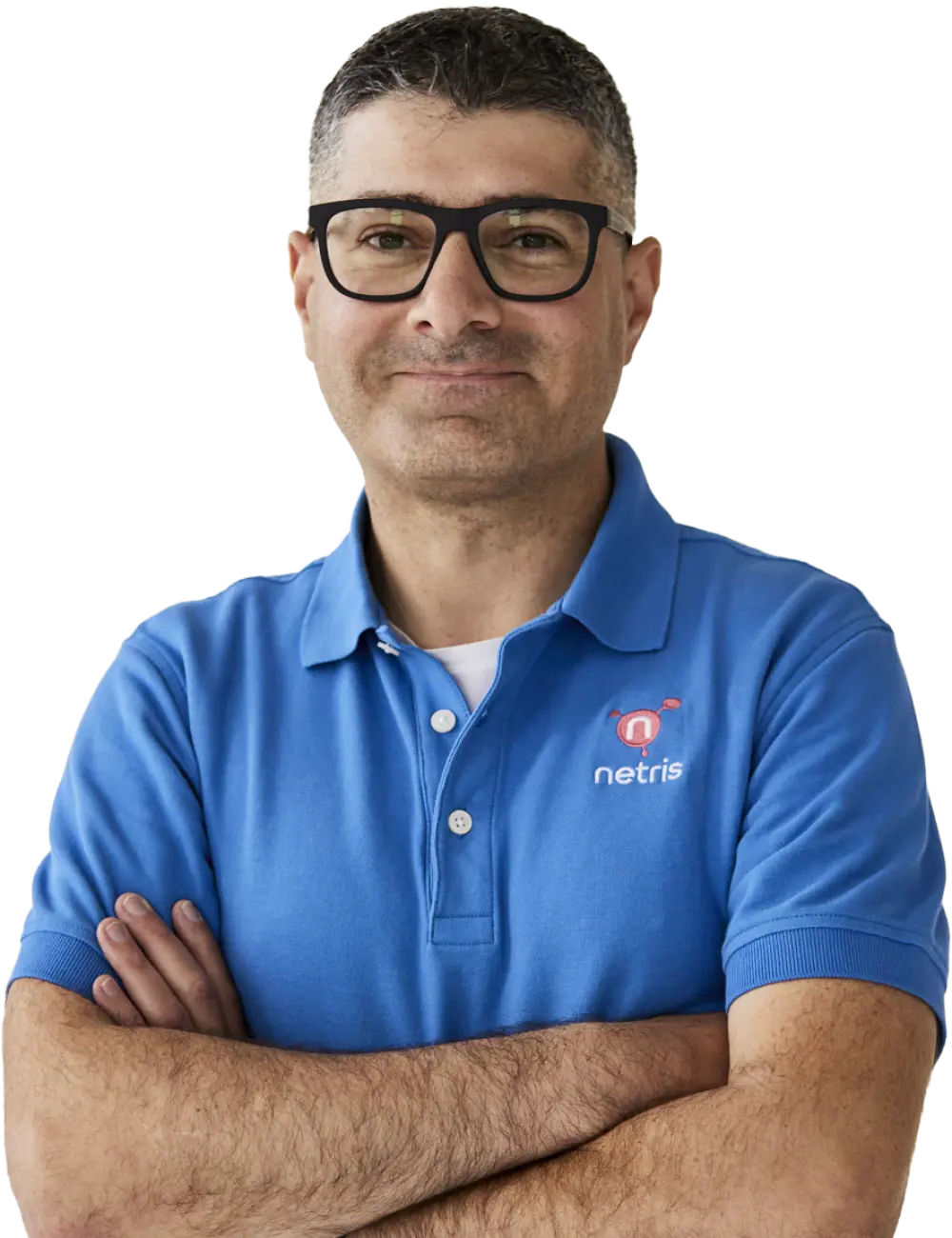How Netris Is Making Private and Hybrid Cloud Networks as Easy as Dining Out
To Alex Saroyan, co-founder and CEO of Netris, managing networks in the public cloud is like dining at a restaurant: You order a configuration, the cloud provider delivers it to you and you consume it. What's more, you can come back and order the same thing, or variations on it, as many times as you want. The experience is easy, consistent and repeatable.
Networking in private and hybrid clouds, by contrast, is akin to buying groceries and cooking a meal yourself. It takes time and effort, and it's different each time you do it.
At least, that's how networking for private and hybrid clouds used to work. Saroyan and his team at Netris are working to change that by building a solution that brings the simplicity and repeatability of public cloud network management to private data centers.
Read on for a look at how they're doing this, why it's important and why Netris might be a key ingredient in your next private or hybrid cloud networking stack.
Making network engineering fun again
The premise behind Netris is simple enough: Public clouds have built tools and frameworks that make it easy to automate network configurations and management, but those solutions work only in public clouds. Netris wants to bring the same experience – IaC-based network configuration, programmable network services, isolated virtual networks and so on – to any environment, not just those hosted in public clouds.
Saroyan puts it this way: "When public clouds started, they knew that network engineering generally sucks, so they automated everything possible to make networking extremely easy. We're doing the same thing, except outside public clouds."
What he means is that Netris allows network engineers to define configurations using convenient and efficient tools – such as Terraform templates or a Web console. From there, Netris automatically implements their desired network configurations, no matter the underlying infrastructure. Instead of poring over manual subnet configurations, routing tables and firewall rules, Netris lets engineers declare what they want to happen, and it then makes it happen.
The Netris team built this solution because it recognizes that not all workloads are a good fit for the public cloud, and it sees clear value in extending engineer-friendly networking solutions beyond the borders of public cloud environments.
Ultimately, "it's all about having fun," Saroyan says. Network engineering has typically not been fun – especially in today's world of super-complex, software-defined network architectures and distributed infrastructure – but the automations that Netris enables will, he hopes, make it possible for network engineers to enjoy their jobs no matter how complicated the networks they are supporting.
Saving the world through networking
Saroyan knows a thing or two about how tedious it can be to manage networks in private and hybrid clouds. He has been living and breathing networks since he was in college (he dropped out in his junior year to start a networking business), and he has held network engineering roles at a variety of companies.
This extensive experience with networking made the discipline start to feel boring to Saroyan. "Eventually, it felt like I had tried most things in network engineering," he says. "I was looking for a challenge."
The challenge he chose to tackle was what he calls "the problem of the awesomeness of the public cloud networking experience, and the lack of awesomeness for everyone else."
As he puts it, "I said to my co-founders, 'Let's go save the world!' And so we started building Netris."
Findings buyers for a mission-critical networking solution
Saving the world with network automation takes time, of course. Plus, convincing businesses to entrust their networks – a core resource – to a new software platform is no mean feat.
To date, Saroyan and his team have spent about five years building Netris, and they're just now at the point where their solution is rapidly expanding to become a key part of networking stacks for many companies.
"Because we have a mission-critical technology, it took several years to iron out the technology with early customers," Saroyan says. "But now the technology is very stable, and we're growing 10 percent every month."
Equinix, in partnership with Netris, has helped power that growth. The network automation and programmability that Netris's software enables holds enormous value for many Equinix customers who deploy workloads in private data centers, and Equinix highlights the availability of the Netris offering to companies that can benefit from it.
"We're a young company, and people don't know much about us," Saroyan says. "But they do know about Equinix, they know Equinix is a customer-centric company that partners with other vendors to bring novel solutions to data centers, and when they see a need among their customers for our software, they bring them to us."
Erasing network boundaries between clouds
The value that Netris brings to private and hybrid clouds today is only a partial element of the vision that Saroyan and his team hope to fulfill. Going forward, they are working on features that will allow their software to pull networking configurations from any major public cloud, then automatically apply the same configuration in other public clouds or private data centers.
"We'll be able to log into any major cloud provider, import everything users have in the cloud provider and do two things: Replicate the network from one cloud provider to another cloud provider, and replicate it beyond the cloud," he says.
That's a big deal because, as Saroyan notes, "the world is never going to be public cloud-only. It's always going to be hybrid. And we need to make the private part of your cloud feel like the public part, at least from a networking perspective."
At Equinix, we certainly agree, and we're pleased to be helping to place Netris's software in the hands of more businesses that can benefit from it.
